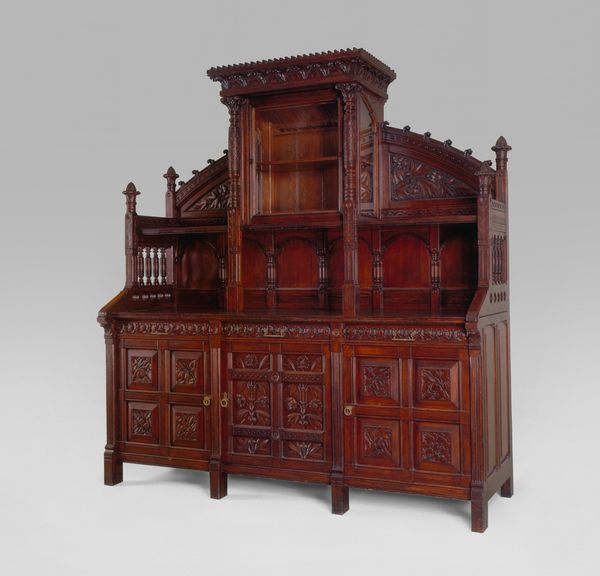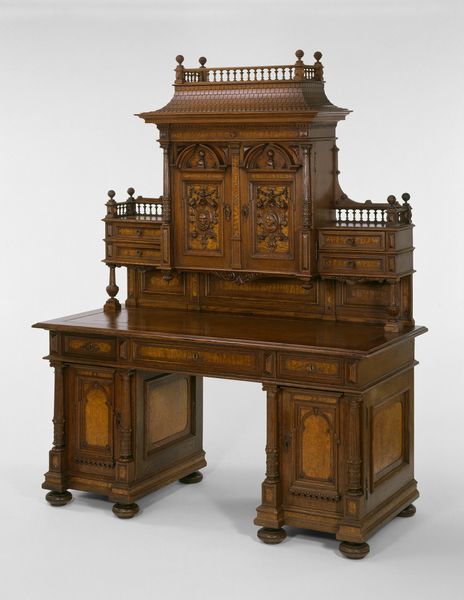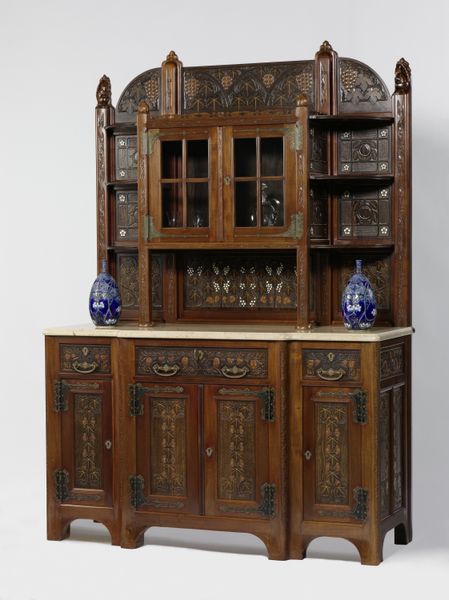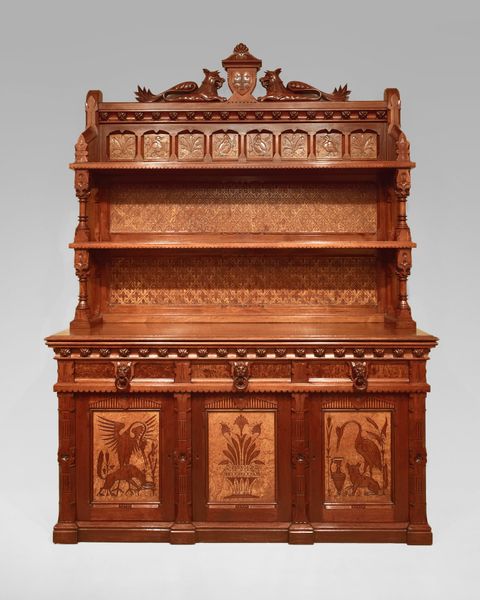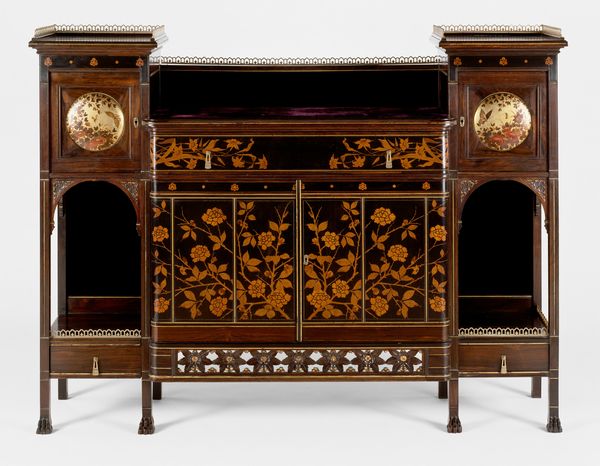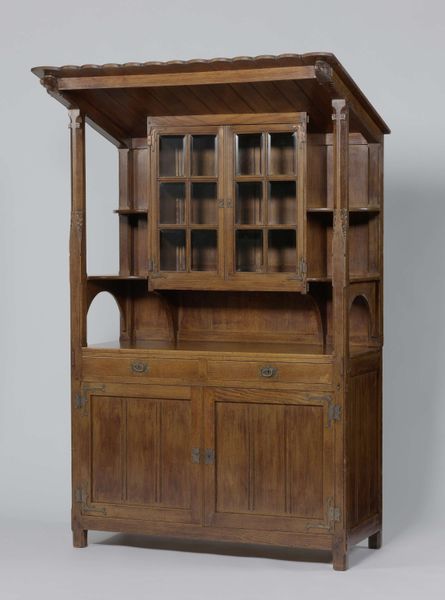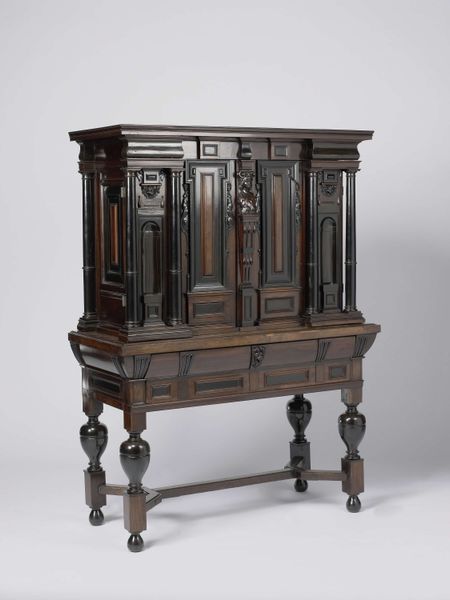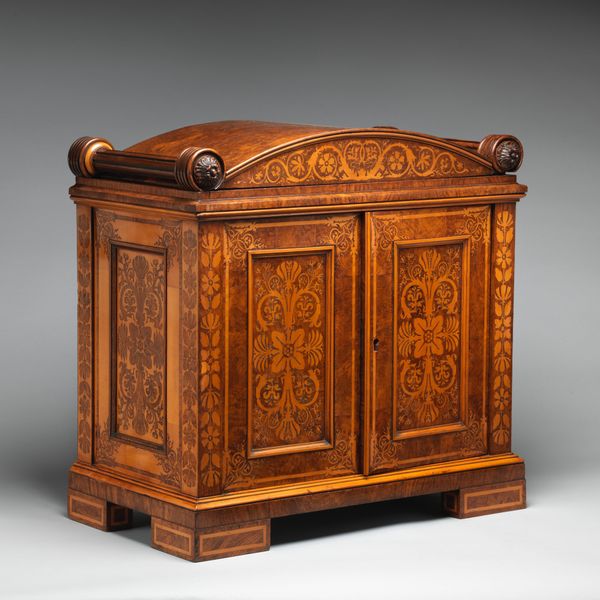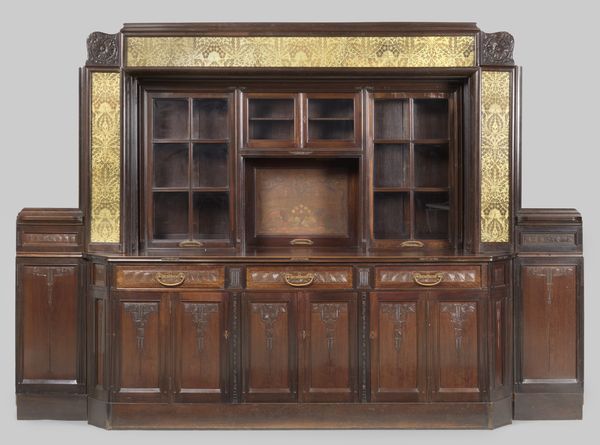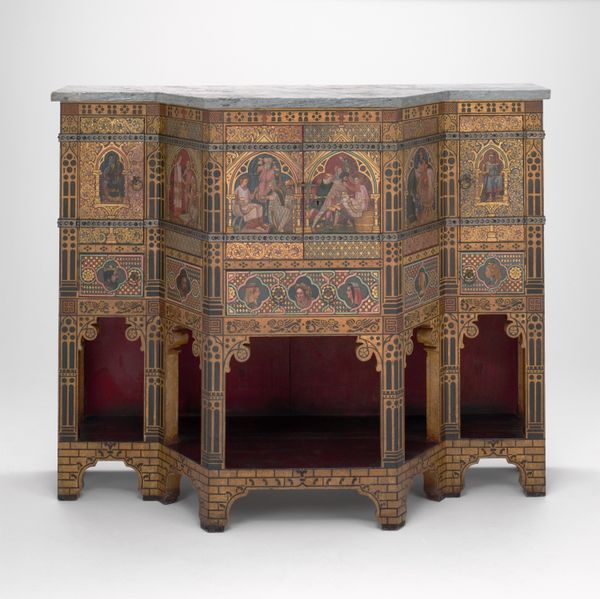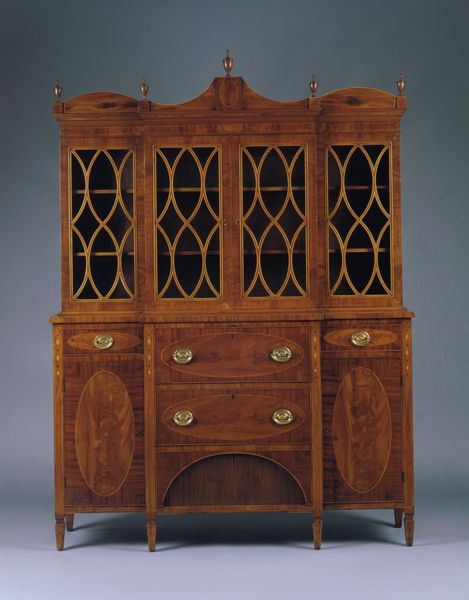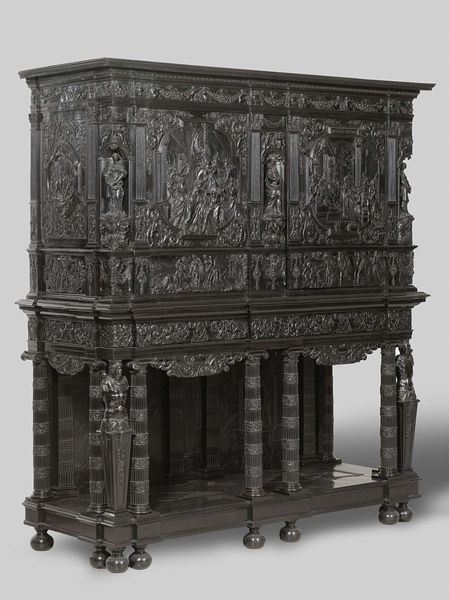
Dimensions: Overall: 128 × 113 × 30 in. (325.1 × 287 × 76.2 cm)
Copyright: Public Domain
Curator: The scale is really striking. At the Metropolitan Museum, we have Bruce J. Talbert's "Sideboard, also known as the Pericles Dressoir", crafted around 1866. The wood carving and overall warm tones give it such presence. Editor: It does possess a kind of austere grandeur, doesn't it? I’m immediately struck by how it embodies the Gothic Revival's fascination with the medieval. It almost feels like a miniature cathedral turned into furniture. Curator: Precisely! Talbert’s detailed carving speaks volumes about the period's desire to reconnect with a seemingly purer, more spiritually resonant past. Note the symbolic weight given to representations of noble creatures – griffins and swans I think I spy… emblems of status but also transformation and grace. Editor: It's interesting how these revivalist styles operate. They often selectively borrow and reshape history to serve contemporary ideological needs. Here, you have this embrace of Gothic forms intertwined with Victorian ideas of domesticity and display. It's less about genuinely recreating the medieval period and more about constructing a particular vision of it. The public function is clear; demonstrate one's elevated taste and education. Curator: Yes, it is more about signaling virtue. Each element – the trefoil arches, the crenellations – isn't just decoration; they're loaded symbols. But the effect goes beyond social signaling. Think about how the arrangement might emotionally impact someone within the space; I can imagine feeling enveloped in the solidity of heritage, affirmed by the righteousness of tradition. Editor: And the paradox inherent in these grand pronouncements through material objects: is this really about timeless values or anxieties over a rapidly changing world? The aesthetic echoes past power structures. Is it reaching towards something timeless or desperately clinging to a vision of a bygone social order? Curator: An interesting provocation to consider! But also a fine testament to the emotional power imbued into handcrafted, symbolic images. I hadn’t considered it quite that way. Editor: We look for meaning where we can, even when it isn’t readily visible. And perhaps it's precisely that ambiguity that allows the piece to resonate still.
Comments
No comments
Be the first to comment and join the conversation on the ultimate creative platform.
